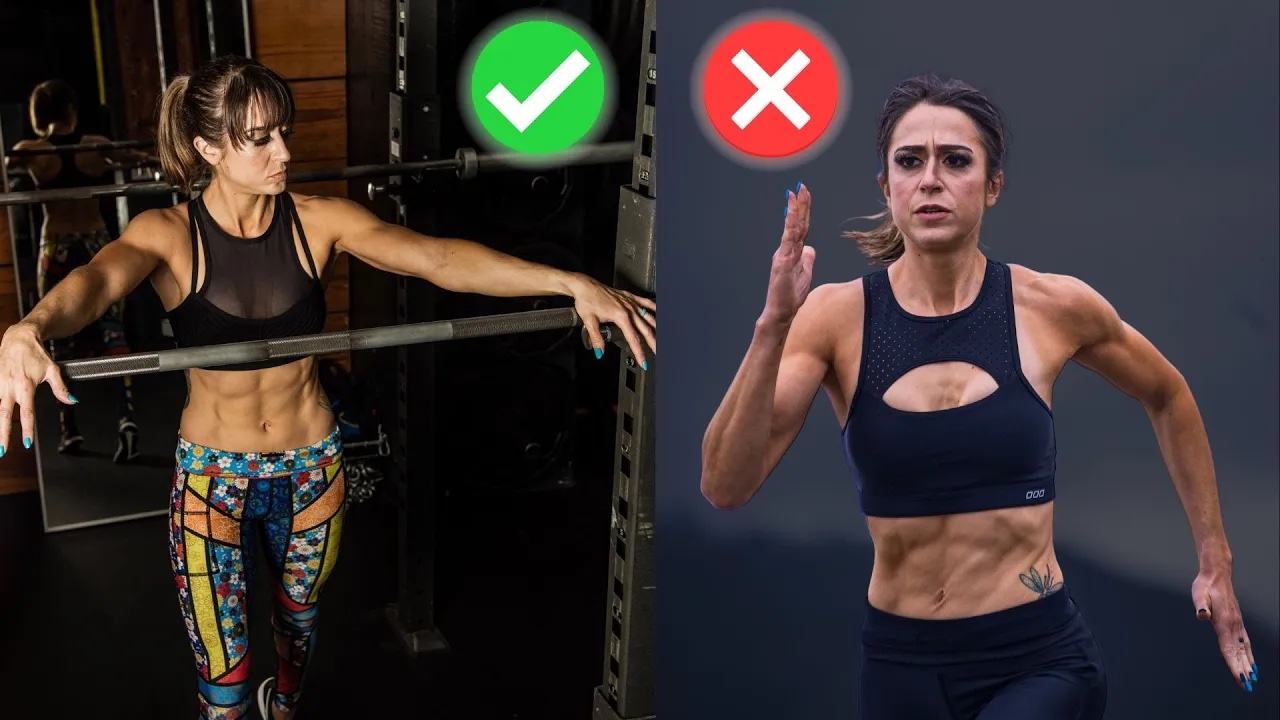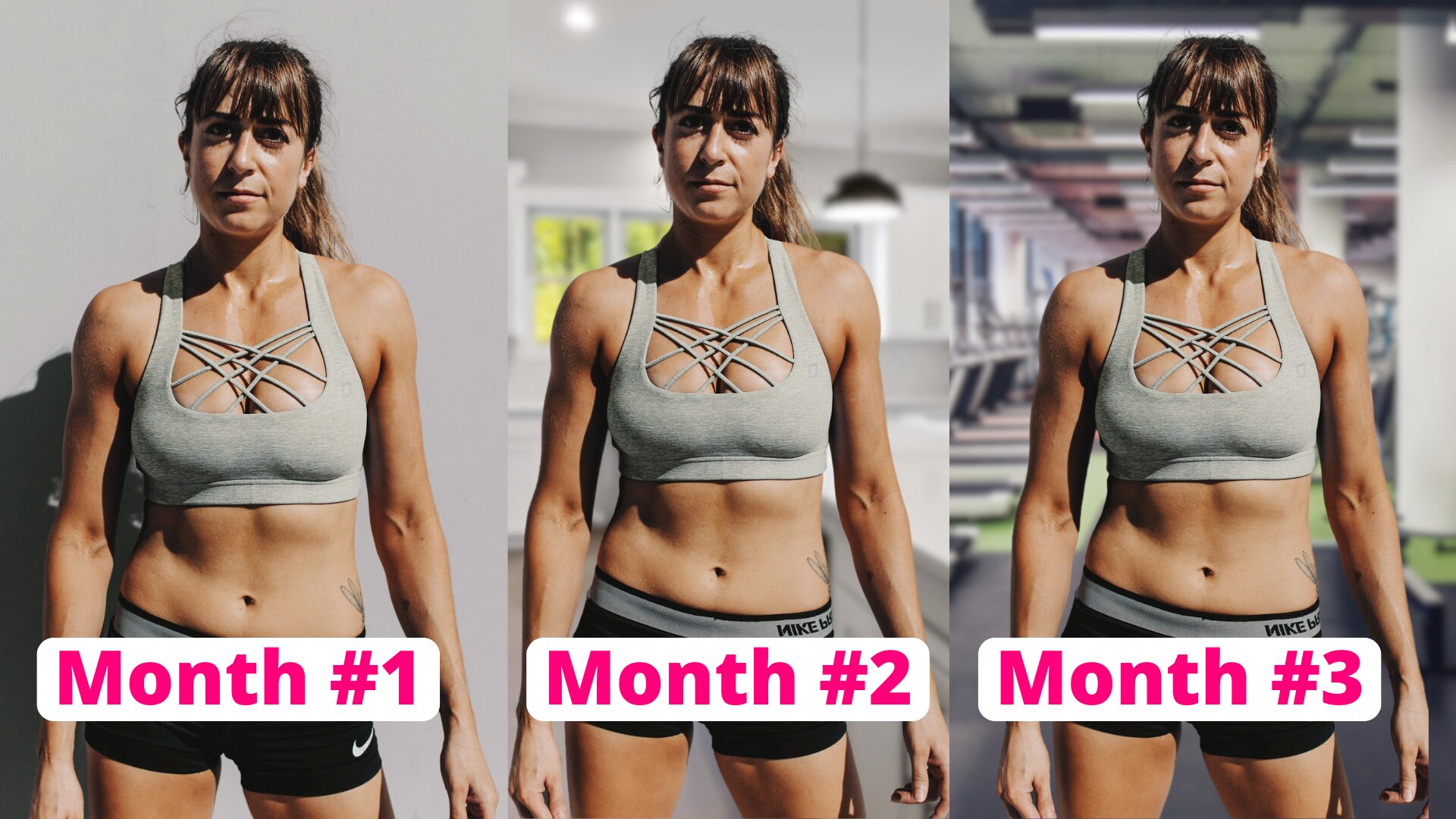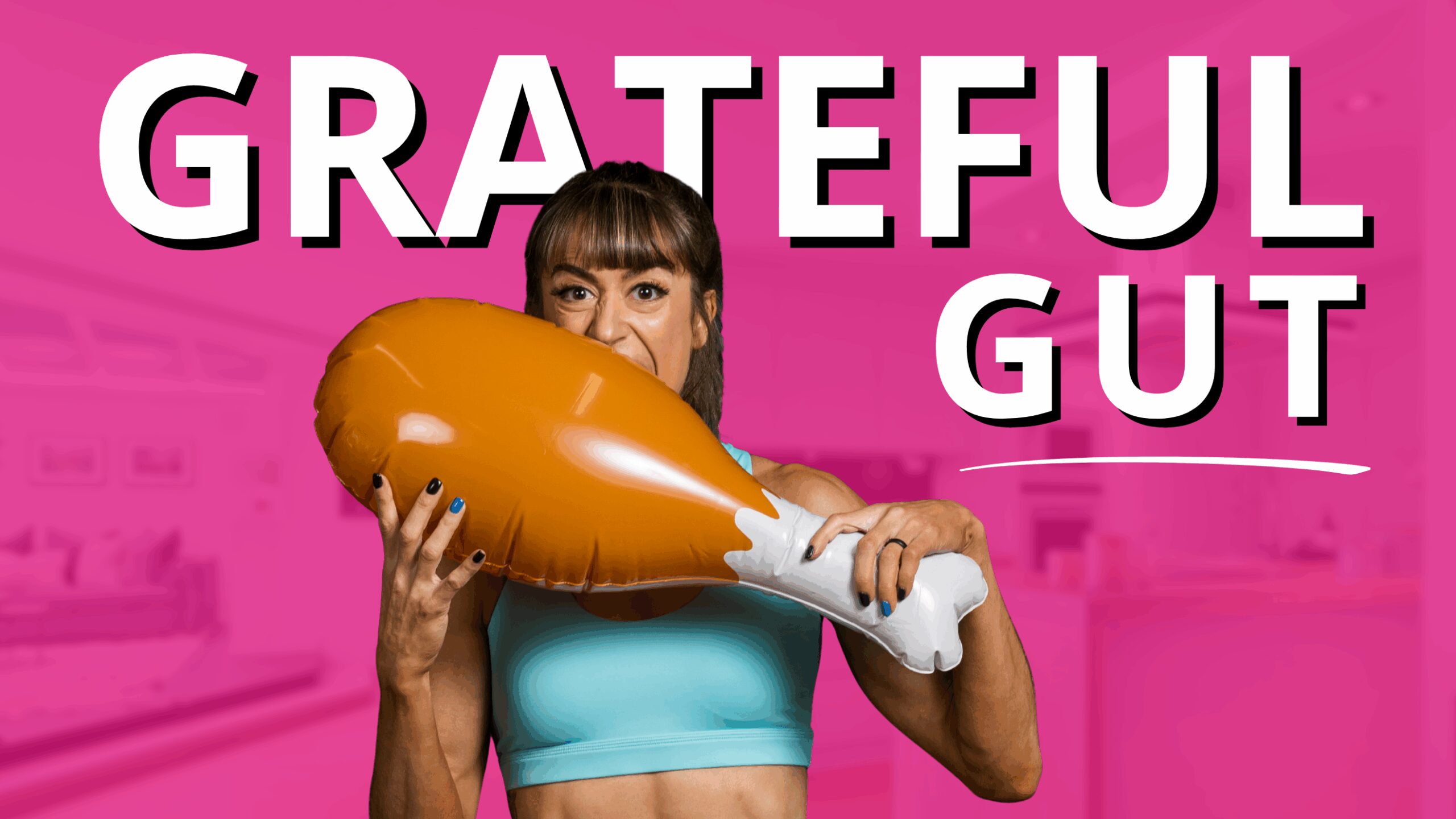So often we focus on progression only through adding loads or doing another rep with a weight.
But at some point, you can’t just keep adding 5lbs every week.
You can’t do another rep.
That’s why creating progression through the same but different is so key.
You don’t need a crazy fancy new device or some new secret exercise.
You can make small tweaks to the moves you’re doing to see those strength and muscle improvements.
So stop getting caught up in only lifting more.
Here are 5 training techniques to help you create that progression through the same but different and see those better muscle gains!
The first way to use the same moves you love and create a new stimulus for growth is to…
Mix Up Equipment

Barbells vs. dumbbells vs. cables vs. bands can all be used to apply tension and create instability and resistance in different ways.
They often even require you to use a different loading placement which can help you change which muscles get more emphasis during a move.
While dumbbells are a great way to load down a step up and challenge your legs, you can emphasize your glutes more during this move by using cables instead.
The cable being anchored down low and the consistent tension as you drive up and then control the lower back down, can help you really feel those glutes more than even your quads.
It can help you keep progressing that step up if you feel yourself starting to cheat with the dumbbells while allowing you to shift how you use the move in your progression because of the shift in muscle emphasis.
You may even find you combine two types of resistances to get the different benefits each provide when you feel you aren’t able to just add more weight.
If you find you can’t really keep progressing loads with a dumbbell chest fly, try lowering the dumbbell weight you’re using while adding in a band for the movement.
The band applies resistance in a new way and even applies more resistance throughout the arc of the movement while forcing you to really control the fly open.
Just by adding in the band, you may be surprised how much lighter your dumbbell weights have to get, allowing you new room for progression.
Not to mention you can even increase the band tension over time as well.
The second tweak you can make to the exercises you’re already including to create progression is to Adjust Your Posture.
Good form isn’t a simply good or bad as we often act like it is.
There are slight changes in our form we can make to emphasize muscles involved in the movement to different extents while also even hitting different aspects of the same muscle.
You could take the same walking lungeand make it more glute intensive by adding in a more vertical shin angle and slightly angled out wide stride or more quad intensive by keeping it more narrow and allowing your knee to travel further forward over the ball of your foot.
Just like you can change your hand placement on push ups to make them more tricep intensive while requiring less scapular control with a narrow grip or slightly less tricep intensive while requiring more scapular control with a standard grip.
Even super small adjustments like slightly different degrees of hip flexion during seated abduction can help you better establish that mind-body connection and engage different aspects of the glute medius.
So often it isn’t even that we need a crazy new move to work an area, we just need to adjust our form slightly to change how it is working!
The third technique is one most of us often avoid because it can really force us to lighten loads and it can be a bit frustrating since it can make moves awkward…
It’s To Change Our Base Of Support.
If you’ve maxed out on a bilateral or two-limbed move, make it a unilateral or one-sided move.
This can create instability, challenge your core more and requires you to even change how you recruit muscles to improve your mind-body connection.
It can also help you address weak links or a weaker side, which may then allow you to lift more when you thought you’d hit your cap with the bilateral variation.
And even when you’re doing a unilateral variation, you can easily mix things up, because many unilateral moves are more challenging than we give them credit for even with lighter loads.
With something like the single leg deadlift, you may find that starting out you don’t have the balance to do the fully unilateral variation. Or you don’t like how much you really have to drop down in weight.
So instead, maybe you try an 80/20 option, or a bench supported option.
This can help you target each side independently while still going a bit heavier than you may be able to with the fully single leg variation.
And changing your base of support doesn’t always have to mean just creating instability or a new challenge for the exact muscle you want to target.
It doesn’t even always mean making that base of support one sided…
It can even be something as simple as doing a chest supported row over a bent over row so that you can’t bounce the weights or use any momentum.
This can be key if you are finding yourself starting to cheat as you’re getting up in weights to try to eek out more.
Sometimes we want to limit what other muscles can be used to get up more weight to help us better hone in on the areas worked.
This can force us often to even go down in loads to start.
With the chest supported row, you may find that having your core locked into the bench allows you to even better focus on that scapular movement!
The 4th way to create progression and even improve your mobility and flexibility in the process is to…Adjust The Range Of Motion
The best way to make sure your flexibility and mobility work sticks is to then strengthen in your workouts through that full range of motion you’ve worked hard to build.
It’s why progressing from a split squat to a deficit split squat may help you improve your hip range of motion while also giving you a new challenge.
That bigger range of motion will make the move more challenging and create extra stretch on muscles under load to help you drive muscle growth.
However, changing the range of motion to drive muscle growth or hypertrophy doesn’t always mean increasing it.
Because metabolic stress is another driver of muscle growth, shrinking the range of motion at times to keep a muscle under tension can also be helpful.
So instead of just doing dumbbell bicep curls, you can combine that move with a resistance band top only curl where you never release tension and only go halfway down in the movement.
This will create fatigue and push you to failure in a new way and help you get more out of your original basic curl without having to progress the weights past the point you’re able to!
With this curl option you’re also using a new tool to help drive growth as well!
Another way to adjust the range of motion to create a new challenge is to actually change the direction or plane of motion you are moving in.
If you’ve been including a single arm suspension trainer row, you may try a rotational row instead.
This changes the range of motion and plane of motion you are working in to not only target the same muscles in different ways but even get new muscles involved to make sure you’re building functional strength in every direction.
The 5th and final technique that can help you drive that muscle growth even using the same moves and weights you are currently is to….
Emphasize the Eccentric.
Small tweaks to what we are currently doing can really add up! Too often we make massive changes over seeing the 1% opportunities.
And emphasizing the eccentric portion of an exercise is a great way to even use your current workouts while pushing growth.
To emphasize the eccentric, you’re going to focus on the portion of the move that is stretching the prime mover or main muscle driving the exercise.
With a pull up, you will want to focus on slowing down the lower down from the bar.
On the squat, you want to slow down the lower down to the bottom of the squat.
This focus on slowing down the stretch of the muscle to spend more time under tension has been shown to be a great way to drive muscle growth.
And it can be used with so many moves.
Just realize you may find that this can make you VERY sore, especially starting out.
Focusing on the eccentric can also help you tackle movements or weights you can’t yet fully use, especially if you change the move to eccentric only with a reset at the start.
With the push up, if you’re including those to build muscle, but can only currently do them off an incline, you may find you can do an eccentric only version from your toes off the ground.
We are often stronger in that eccentric portion of the move.
And that progression to that full version, plus the time under tension, could help you progress a move you are stuck on to build muscle!
We have to remember there are so many ways to create progression that aren’t just about adding more weight or doing another rep.
And the more advanced we are, the more we need to see opportunity in creating progression through the same but different.
So even using your current workout progression, see how you can use these techniques to make small tweaks and see those muscle gains improve!
Want even more amazingness from Redefining Strength?
Join my free daily newsletter!



All great suggestions!
Thank you Diane! Glad they help!